Asus Radeon HD 4870 X2 Top (EAh5870X2 TOP/HTDI/2G/A) — Radeon HD 4870 X2: Four Cards Compared
Image 1 of 2
The TOP model is shipped with higher-than-reference clock frequencies. The standard for the GPU is 750 MHz and Asus increases this to 790 MHz. The graphics memory speed is only slightly increased, from the standard of 900 MHz to 915 MHz (DDR5 frequency 3660 MHz).
For this comparison, we don’t do additional overclocking because the overall gain turns out to be rather low. But if you want to take the card to its limits, you can get quite a bit more out of the TOP model. The test card can easily do a GPU frequency of 822 MHz, which is the best value in the test group. A nice addition is the extension of Overdrive . Asus increases the usual limit in the driver from 800 MHz to 900 MHz. This option functions independently of any particular software version, because it is available in the Catalyst 8.10 from AMD’s homepage.
The graphics memory has similar overclocking potential. The reference speed is 900 MHz and Asus sets the TOP model to 915 MHz. But our test card can easily do a stable 990 MHz—again the best value in the test group. As long as you install only Catalyst 8.10, the fan profile works without a problem, with the fan adjusting its speed according to the clock speed. With the additional overclocking, it spun at 3,400 RPM to maintain 85°C. When you use the preset Asus settings (790 and 915 MHz), the temperature can rise to 89 or 92 degrees, which is due to the lower fan speed of 3,000 RPM.
If you install the Catalyst 8.10 with the Asus Smart Doctor that comes included, the fan profiles get screwed up. In 2D mode the fan speed rises from 27% (standard) to 65%, and the noise level rises from a quiet 37.0 dB(A) to a loud 46.2 dB(A). These values sound alright, but you can see the issue when looking at the high temperatures in 3D mode. The fan doesn’t turn on reliably until the temperature reaches 96°C. It’s an inconsistent issue at best, though, as one of the five tests did see the fan turn on at a correct time.
Asus didn’t put in games or additional software. Instead, the company gives you two power adapters, and the 8-pin adapter is rather rare. You get HDMI through using the DVI adapter, and it comes with a bridge for Crossfire. Finally, you get a leather bag for CDs and DVDs as a special extra.
Naturally, despite all of our praise for this board’s overclocking headroom, bear in mind that Asus is only going to cover your card with a warranty if it wasn’t fried in the line of duty. Overclocking can be risky, especially at the temperatures we’re talking about here. You pay for Asus’ additional clock speed, plus the luxury of factory coverage. Taking the card past that point is at your own risk.
Asus Radeon HD 4870 X2 Top
As a TOP model, the card comes overclocked, but it can take significantly more tweaking before showing instability—it has the largest overclocking potential in the test group with a maximum of 822 MHz (GPU) and 990 MHz (memory). As long as you run the card with only Catalyst 8. 10, the fan profiles work well; problems occur only when you install the Asus Smart Doctor.
10, the fan profiles work well; problems occur only when you install the Asus Smart Doctor.
- Advantages
- Disadvantages
- Best overclocking potentialOutstanding fan profiles with Catalyst 8.10Adapter for 8 pin power supply
- Smart Doctor + Catalyst 8.10 causes errors
Current page:
Asus Radeon HD 4870 X2 Top (EAh5870X2 TOP/HTDI/2G/A)
Prev Page Radeon HD 4870 X2 Specifications and Ports
Next Page Software Asus Radeon HD 4870 X2 Top
Overclocked Radeon HD 4870 X2 Shoot-Out: ASUS, MSI
- TRENDING:
- Intel 13th Gen Core Review
- Pixel 7 And Pixel 7 Pro
- GeForce RTX 4090 Review
- Raptor Lake
- Intel Arc A700 Series
- Ryzen 7900X And 7950X
- Radeon 7000 RDNA 3
homePC ComponentsGraphics/Sound
NVIDIA’s and AMD’s graphics board partners usually take differing approaches when releasing factory overclocked variants of each company’s respective high-end GPUs. When NVIDIA launches a new part for example, their board partners typically have factory overclocked versions at the ready, and at launch, it’s sometimes easier to find overclocked cards than stock reference models. AMD’s board partners, however, don’t usually take the same approach. When AMD launches a new ATI Radeon, the first batch of cards to hit typically follow the reference design to the letter, and custom, factory overclocked models don’t arrive until some time later.
When NVIDIA launches a new part for example, their board partners typically have factory overclocked versions at the ready, and at launch, it’s sometimes easier to find overclocked cards than stock reference models. AMD’s board partners, however, don’t usually take the same approach. When AMD launches a new ATI Radeon, the first batch of cards to hit typically follow the reference design to the letter, and custom, factory overclocked models don’t arrive until some time later.
That’s what happened with the Radeon HD 4870 X2. At launch, just about every Radeon HD 4870 X2 available at retail had the exact same features and specifications. But more recently, a few board partners have introduced factory overclocked variants that take the performance of what is already the fastest graphics card available up a notch. We’ve actually got two of them in house, the Asus EAh5870X2 TOP and the MSI R4870X2-T2D2G-OC, and plan to show you just how much extra performance each has to offer over standard reference cards.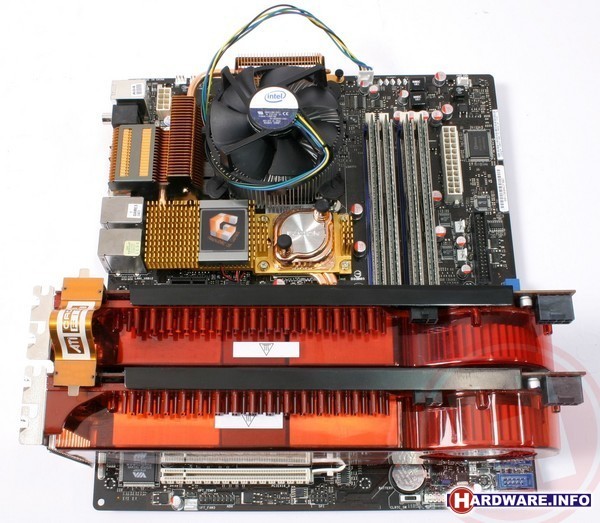
ATI Radeon HD 4870 X2
|
|
|
|
Related content
-
NVIDIA GeForce RTX 3090 Review: BFGPU Benchmarks Unleashed
-
Samsung SSD 980 Pro Review: Blazing Fast PCIe 4.
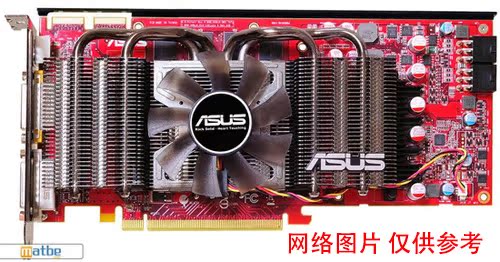 0 Storage
0 Storage -
Palit GeForce RTX 3080 GamingPro OC Review: Big, Custom Ampere
-
NVIDIA GeForce RTX 3080 Review: Ampere Is A Gaming Monster
-
TONOR Q9 USB Microphone Kit Review: Affordable, Quality Audio
Comments
ATi Radeon HD 4870 X2 2×1 GB: Speed Above Everything
- Foreword
- 1. Overview of HIS Radeon HD 4870 X2 2×1 GB
- 2. A brief overview of the video cards involved in testing:
- XFX GeForce GTX 280 1 GB
- HIS Radeon HD 4870 512MB
- XFX GeForce 8800 GTX 768MB
- 3. Specifications, recommended price, noise level and power consumption
- 4. Test configuration, testing tools and methodology, video cards for comparison
- 5. Video Card Performance Test Results and Analysis
- 6. Performance Comparison Summary Charts
- Radeon HD 4870 X2 2×1 GB vs. Radeon HD 4870 512 MB
- Radeon HD 4870 X2 2×1 GB vs.
 GeForce GTX 280 1 GB
GeForce GTX 280 1 GB - Conclusion
Leadership in the Hi-End class of graphics accelerators for the companies that produce them is a matter of prestige. Despite the relatively low demand for the fastest video cards, the cost of which in the last two or three years is almost always higher than 600 or even 700 US dollars, they are a kind of guideline for most users who are more or less interested in games. It is video cards of this class that demonstrate a kind of benchmark performance in modern games. And if products based on graphics processors from ATi or NVIDIA occupy this «throne», then the company itself is considered a leader in a certain period of time, which certainly affects the growth in sales of video cards in all price segments and an increase in the manufacturer’s rating.
In my opinion, from the moment the NVIDIA GeForce 8800 GTX/Ultra appeared on the market and inclusively until the release of the GeForce GTX 260/280 line, the leadership in the top class of video cards belonged to NVIDIA. For its part, ATi (and later AMD) attempted to regain the top spot by releasing the dual-chip Radeon HD 3870 X2. However, it was not possible to do this in full measure: problems with drivers, the AFR rendering mode, which has no alternative for ATi, the presence of GeForce 9 on the market800 GX2, and the new GPU from NVIDIA G200, which arrived very quickly, did not allow the HD 3870 X2 to win the fame of the fastest video card.
For its part, ATi (and later AMD) attempted to regain the top spot by releasing the dual-chip Radeon HD 3870 X2. However, it was not possible to do this in full measure: problems with drivers, the AFR rendering mode, which has no alternative for ATi, the presence of GeForce 9 on the market800 GX2, and the new GPU from NVIDIA G200, which arrived very quickly, did not allow the HD 3870 X2 to win the fame of the fastest video card.
Nevertheless, having released the undoubtedly successful video cards of the middle class Radeon HD 4850 and HD 4870, ATi graphics division, now owned by AMD, announces on August 12, 2008 a two-chip Hi-End class video card — Radeon HD 4870 X2 with a recommended price of 549 US dollars and with clear claims to absolute leadership. A little later, her younger sister, the Radeon HD 48 9, should also appear on the market.0039 50 X2 with a recommended price of up to $400, which we will also study and test later. Well, today we present to your attention a review and «speed test» of the Radeon HD 4870 X2, released under the label of Hightech Information System Limited (
HIS
).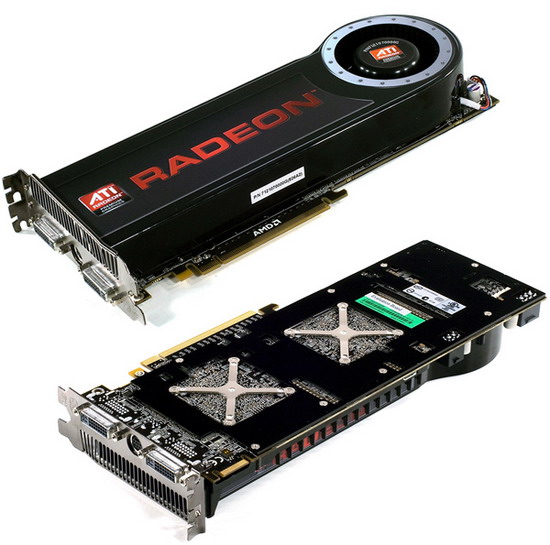
The design style and dimensions of the box in which the HIS Radeon HD 4870 X2 is supplied have not changed in comparison with the previously reviewed Radeon HD 4850 and HD 4870 from the same manufacturer. Is that the color scheme is now predominantly green:
On the front side of the box you can find information about the video card model, its interface, the amount and type of installed video memory. The reverse side is replete with lines of board specifications, a description of system requirements, as well as information about the features of graphics technologies embedded in the GPU. Here are the awards of printed and electronic publications (of which there are already more than 600) received by HIS products. The video card is made in China.
recommendations
Inside the colorful cardboard box is another one, this time made of thick white cardboard, and in it is a plastic shell with compartments for the video card and accessories included in the package. Among the latter, the following components can be found:
Among the latter, the following components can be found:
I will list them from left to right and from top to bottom:
- adapter from S-Video out to component cable;
- one DVI to HDTV adapter;
- one 15 pin DVI / D-Sub adapter;
- DVI-to-HDMI splitter adapter;
- flexible bridge for CrossFire;
- CD with video card drivers and proprietary overclocking utility;
- user manual;
- HIS holographic sticker;
- coupon for free download of Half-Life 2 games.
In a separate box there is a branded universal screwdriver-level-flashlight from HIS — an indispensable thing for an overclocker 😉 .
Video card dimensions are 269x 109 x 37 mm, but in principle they hardly bother anyone, since the GeForce GTX 260/280 line, and the Radeon HD 3870 X2, are no less. Surprise is the weight of the video card (more than one and a half kilograms). Perhaps this is the heaviest graphics accelerator in history. If it goes on like this, then soon, using the backplate, we will mount not only processor coolers, but also video cards 😉 .
Perhaps this is the heaviest graphics accelerator in history. If it goes on like this, then soon, using the backplate, we will mount not only processor coolers, but also video cards 😉 .
Almost the entire front side of the HIS Radeon HD 4870 X2 is covered by the cooling system:
Of course, we have a reference video card and PCB design, and it is unlikely that we will see non-reference Radeon HD 4870 X2 in the near future. The belonging of the product to the HIS company can only be judged by the sticker on the turbine of the cooling system, and by the identification stickers on the back of the video card:
As you can see, an aluminum plate is also installed on the back of the PCB, which is a kind of heatsink for video card memory chips located on the reverse side of the board.
HIS Radeon HD 4870 X2 is equipped with a PCI-Express x16 version 2.0 interface, two DVI-I (dual-link) ports with support for high resolutions, as well as an S-Video output, combined with a grill for ejection of heated air from the system unit case:
At the top of the board, you can find two connectors for connecting additional power — six- and eight-pin, an interface for CrossFireX, as well as a needle heatsink on video memory chips on the front side of the PCB:
The power section of the board is as follows:
The power requirements of the Radeon HD 4870 X2 may scare owners of not very powerful power supplies, as the peak power consumption of this video card can reach 260 watts, which requires a power supply of at least 550 watts. If you connect two six-pin connectors to the video card, then it will not start, swearing at the wrong power supply. A system with dual Radeon HD 4870 X2 graphics cards requires a PSU of at least 750~800W.
If you connect two six-pin connectors to the video card, then it will not start, swearing at the wrong power supply. A system with dual Radeon HD 4870 X2 graphics cards requires a PSU of at least 750~800W.
Let’s look at the Radeon HD 4870 X2 without a cooling system:
Particularly interesting is the central part of the front side of the board, where two graphic processors and a chip switch fit:
It is clearly seen that both GPUs are turned towards the chip, and the memory chips are installed on both sides of the processors from the back and front sides of the PCB.
The Radeon HD 4870 X2 has two RV770 GPUs that are identical in functionality to those installed on regular Radeon HD 4870s:
Both GPUs were released in Taiwan on week 27, 2008 and do not have protective covers. The area of each of the crystals is 256 square mm, and the number of transistors is about 956 million. Each of the GPUs is equipped with 800 unified shader processors, 40 texture units and 16 ROP units. The frequencies of both GPUs in 3D mode are the same and amount to 750 MHz. Interestingly, according to monitoring data obtained using the GPU-Z utility and the latest version of RivaTuner, in 2D mode, only one of the two GPUs drops to 500 MHz, while the second continues to operate at full 750 MHz. Perhaps, in the new Catalyst drivers or even in the «fresh» BIOS versions for the Radeon HD 4870 X2, this rather strange feature will be fixed.
The frequencies of both GPUs in 3D mode are the same and amount to 750 MHz. Interestingly, according to monitoring data obtained using the GPU-Z utility and the latest version of RivaTuner, in 2D mode, only one of the two GPUs drops to 500 MHz, while the second continues to operate at full 750 MHz. Perhaps, in the new Catalyst drivers or even in the «fresh» BIOS versions for the Radeon HD 4870 X2, this rather strange feature will be fixed.
Unlike the Radeon HD 3870 X2, the new video card is equipped with a PEX8647 switch chip from PLX Technology:
This 2nd generation IC has the ability to communicate directly between two GPUs and now supports twice the bandwidth of the IC found in the Radeon HD 3870 X2 (PEX8 5 47). In addition, the Radeon HD 4870 X2 has a data link, referred to as «Sideport», with a bandwidth of 5 GB per second. However, it is currently disabled in the Catalyst drivers (or not yet implemented at all by the driver developers).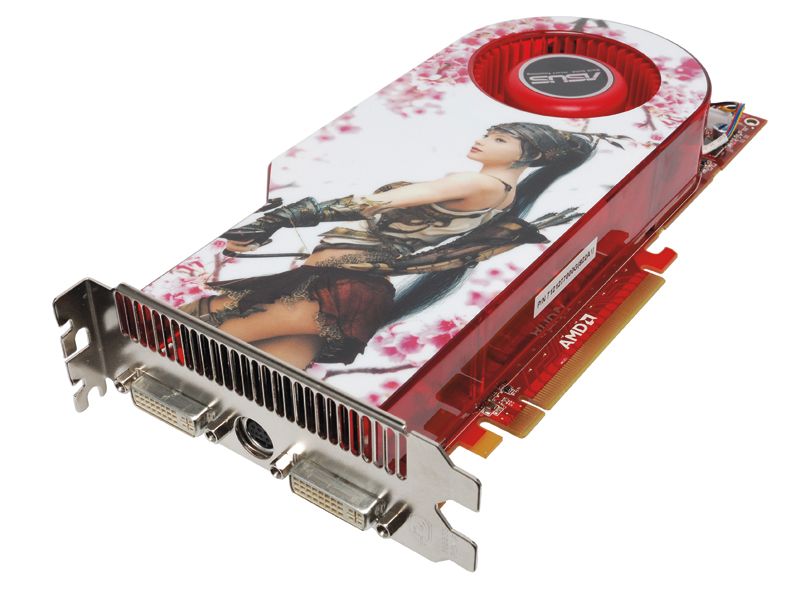
Each GPU has eight GDDR5 memory chips with a total capacity of 1 GB. Thus, although common, but shared, the amount of video card memory is 2 GB. HIS Radeon HD 4870 X2 is equipped with Hynix chips:
Chip marking —
H5GQ1h34MJR-T0C
, and their nominal access time is 1.0 ns with a theoretical effective throughput for the GDDR5 standard of 4000 MHz. Meanwhile, the HIS Radeon HD 4870 X2 video memory operates at 3600 MHz, which fully complies with the specifications of the Radeon HD 4870 X2 and HD 4870.
This is what the GPU-Z utility shows for the first and second GPU of the video card:
Now about the video card cooling system. The reference Radeon HD 4870 X2 cooler actually consists of two halves: an aluminum plate with thermal pads on the reverse side of the board, and, in fact, the main cooling system on the front side of the PCB:
The latter consists of a metal radiator (judging by the weight it is not aluminum), painted in black, with a turbine installed on it, and two copper radiators designed to cool graphics processors:
From above, the entire structure is covered with a plastic casing, which serves as a kind of air duct.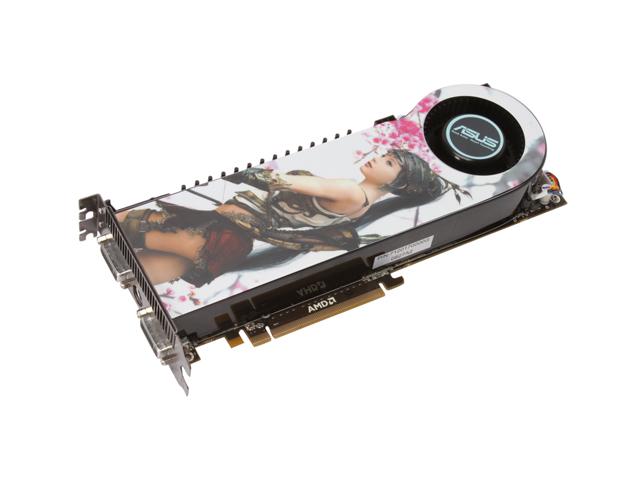
GPU heatsinks do not shine with technical frills and are an extremely simple rectangle with a ~5 mm thick copper base and ~25 mm high thin copper fins:
The even and highly polished base of the heatsinks is in contact with the surface of the GPU die with thick gray thermal paste.
Both radiators are cooled by a single turbine made in China, manufactured by NTK Technologies Inc:
The model of the turbine is CF1275-B30H-C005, and according to the data on the sticker, it consumes up to 12 watts of electricity. The turbine rotation speed is automatically adjusted depending on the temperature of the graphics chip in the range from ~1150 to ~2900 rpm (according to monitoring data). The turbine is not audible only at its minimum rotation speed (up to about ~ 1300 rpm inclusive). It’s a pity, of course, but this is a payment for the high speed of the video card.
Let’s check the temperature regime of the video card.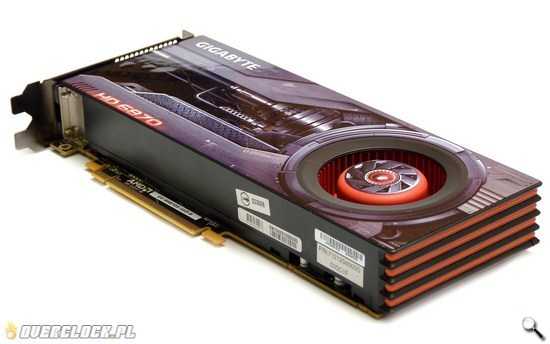 The testing methodology was to run the Firefly Forest benchmark ten times from the 3DMark 2006 synthetic graphics benchmark at 1920 x 1200 resolution with 4x full-screen anti-aliasing enabled and 16x anisotropic filtering. All tests were carried out in a closed case ASUS Ascot 6AR2-B of the system unit (you can find the fan configuration in it below in the section with the testing methodology):
The testing methodology was to run the Firefly Forest benchmark ten times from the 3DMark 2006 synthetic graphics benchmark at 1920 x 1200 resolution with 4x full-screen anti-aliasing enabled and 16x anisotropic filtering. All tests were carried out in a closed case ASUS Ascot 6AR2-B of the system unit (you can find the fan configuration in it below in the section with the testing methodology):
Room temperature during testing was 22 degrees Celsius. Video card frequency and temperature were monitored using RivaTuner v2.10 (author — Alexey Nikolaychuk AKA Unwinder). Due to the fact that the video card was disassembled before the tests, the standard thermal interface on the GPU was replaced with high-performance Arctic Silver 5 thermal paste, applied in a thin layer on both GPUs.
Let’s look at the temperature conditions of the Radeon HD 4870 X2 with automatic operation of the cooling system turbine:
The monitoring graphs show the temperature of the hottest GPU of the video card. The second processor, apparently located closer to the turbine, only warms up to 67 degrees Celsius. Such a difference between temperatures is explained quite simply, since the second copper heatsink gets already quite heated air from the GPU heatsink closest to the turbine. Nevertheless, in my opinion, for a top-end video card, a temperature of 91 degrees Celsius at the peak of the load is not something extraordinary. But the elements of the video card’s power circuits warm up to 110 degrees Celsius, which, although it fits within the permissible limit, is, subjectively, somewhat alarming from a psychological point of view.
The second processor, apparently located closer to the turbine, only warms up to 67 degrees Celsius. Such a difference between temperatures is explained quite simply, since the second copper heatsink gets already quite heated air from the GPU heatsink closest to the turbine. Nevertheless, in my opinion, for a top-end video card, a temperature of 91 degrees Celsius at the peak of the load is not something extraordinary. But the elements of the video card’s power circuits warm up to 110 degrees Celsius, which, although it fits within the permissible limit, is, subjectively, somewhat alarming from a psychological point of view.
Now about overclocking the video card. Since we do not yet have an alternative cooling system for the Radeon HD 4870 X2, the overclocking potential of the video card was tested using the reference cooler in its automatic mode (at the time of preparation of the material, there was no software for manually controlling the speed of the video card turbine). The video card was overclocked using the AMD GPU Clock Tool utility version 0. 9.8. We were immediately given two such video cards from HIS for testing. The first of them, without loss in stability and as a picture, was able to function stably at frequencies of 800/3800 MHz, and the second managed to reach frequencies of 820/3800 MHz (+9.3/+5.6%):
9.8. We were immediately given two such video cards from HIS for testing. The first of them, without loss in stability and as a picture, was able to function stably at frequencies of 800/3800 MHz, and the second managed to reach frequencies of 820/3800 MHz (+9.3/+5.6%):
Interestingly, the temperature of the hottest core of the video card increased by only 1 degree Celsius, but this most likely happened due to the fact that the turbine of the cooling system spun up ~150 rpm more than in the nominal mode of operation of the video card:
We will talk about the noise level of the turbine in the section with the results of its measurement.
BIOS video card HIS Radeon HD 4870 X2 2×1 GB you can download from the file archive (
WinRAR archive, 46.2 KB
). The recommended price for a novelty is 549US dollars.
Subscribe to our channel in Yandex.Zen or telegram channel @overclockers_news — these are convenient ways to follow new materials on the site.

 1 support
1 support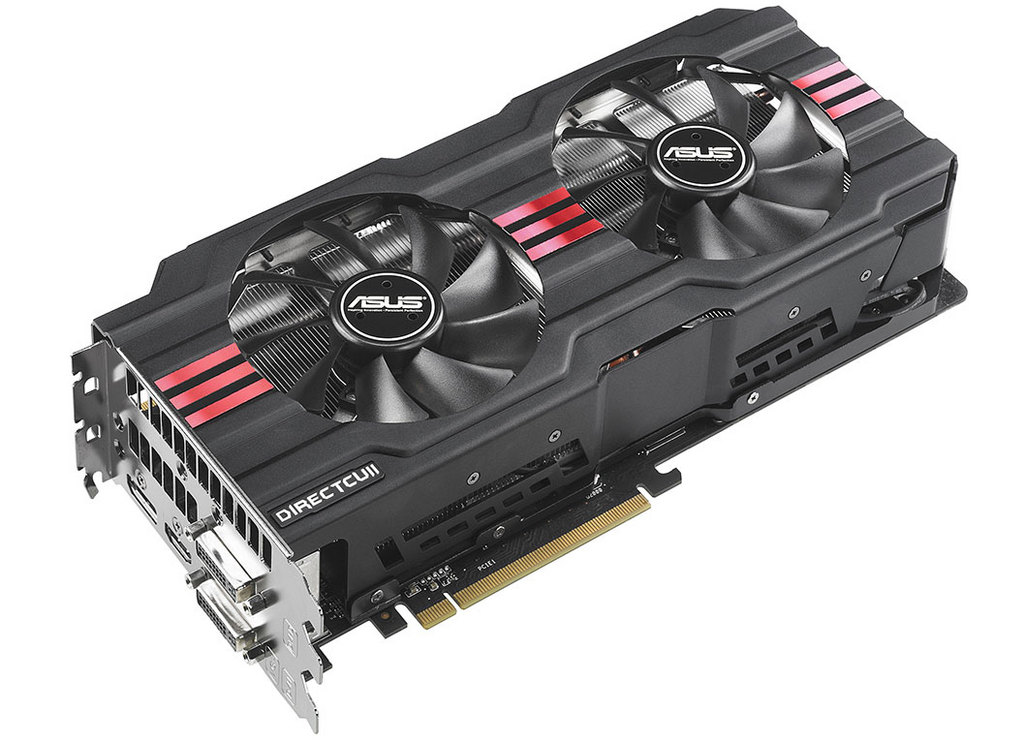 0 Support
0 Support  Keep in mind, however, that there are two RV770 GPUs on Radeon HD 4870 X2 cards, each coupled to 1GB of GDDR5 RAM, for a grand total of 2GB of frame buffer memory. We’ve gone into detail on the Radeon HD 4870 X2 in the past, so we won’t cover the architecture again here, but if you’d like more information about the technologies employed on the Radeon HD 4870 X2, here are a few links to some of our previous coverage:
Keep in mind, however, that there are two RV770 GPUs on Radeon HD 4870 X2 cards, each coupled to 1GB of GDDR5 RAM, for a grand total of 2GB of frame buffer memory. We’ve gone into detail on the Radeon HD 4870 X2 in the past, so we won’t cover the architecture again here, but if you’d like more information about the technologies employed on the Radeon HD 4870 X2, here are a few links to some of our previous coverage: